- About MAA
- Membership
- MAA Publications
- Periodicals
- Blogs
- MAA Book Series
- MAA Press (an imprint of the AMS)
- MAA Notes
- MAA Reviews
- Mathematical Communication
- Information for Libraries
- Author Resources
- Advertise with MAA
- Meetings
- Competitions
- Programs
- Communities
- MAA Sections
- SIGMAA
- MAA Connect
- Students
- MAA Awards
- Awards Booklets
- Writing Awards
- Teaching Awards
- Service Awards
- Research Awards
- Lecture Awards
- Putnam Competition Individual and Team Winners
- D. E. Shaw Group AMC 8 Awards & Certificates
- Maryam Mirzakhani AMC 10 A Awards & Certificates
- Two Sigma AMC 10 B Awards & Certificates
- Jane Street AMC 12 A Awards & Certificates
- Akamai AMC 12 B Awards & Certificates
- High School Teachers
- News
You are here
Mathematical Treasure: François Viète’s Opera Mathematica
Although not a mathematician by profession, François Viète (1540–1603) made several important contributions to mathematics. One such contribution was the introduction of more symbolism within algebra; Viète was one of the first to use letters to represent known and unknown quantities. Opera Mathematica, which is a collection of mathematical works by Viète, was published after his death by Franz Schooten in 1646. Below is the title page and the table of contents.
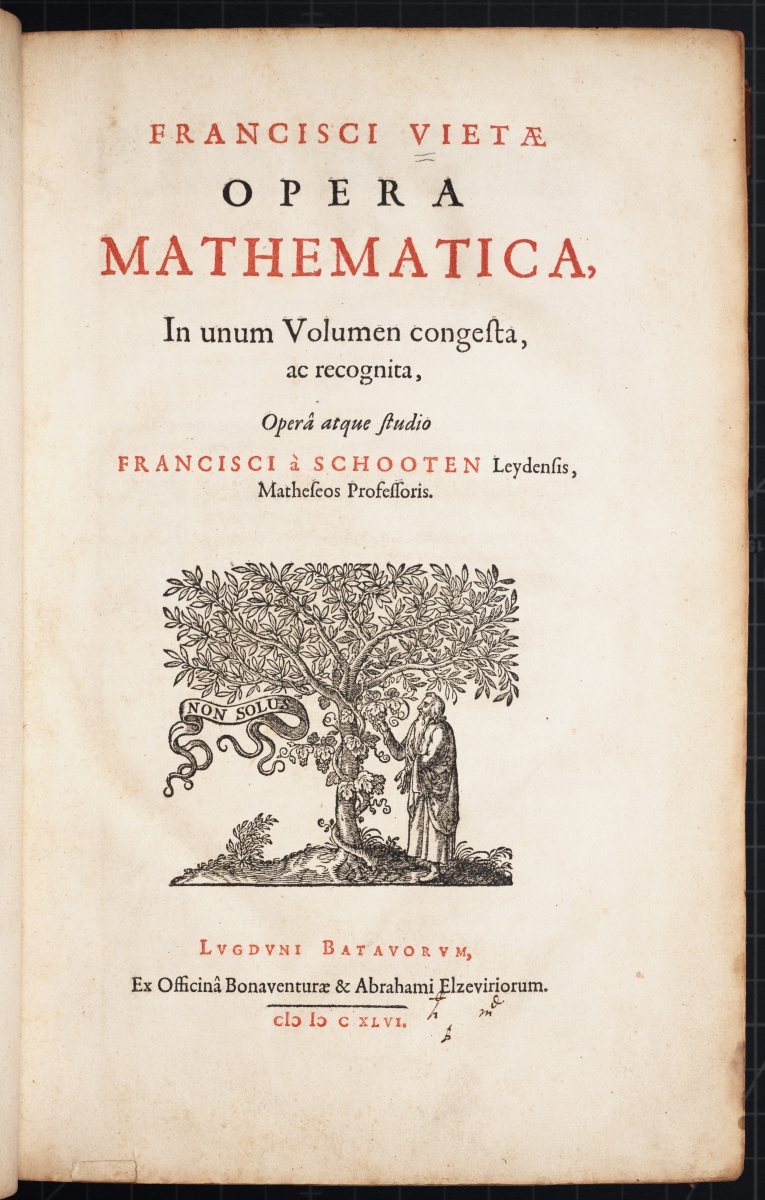
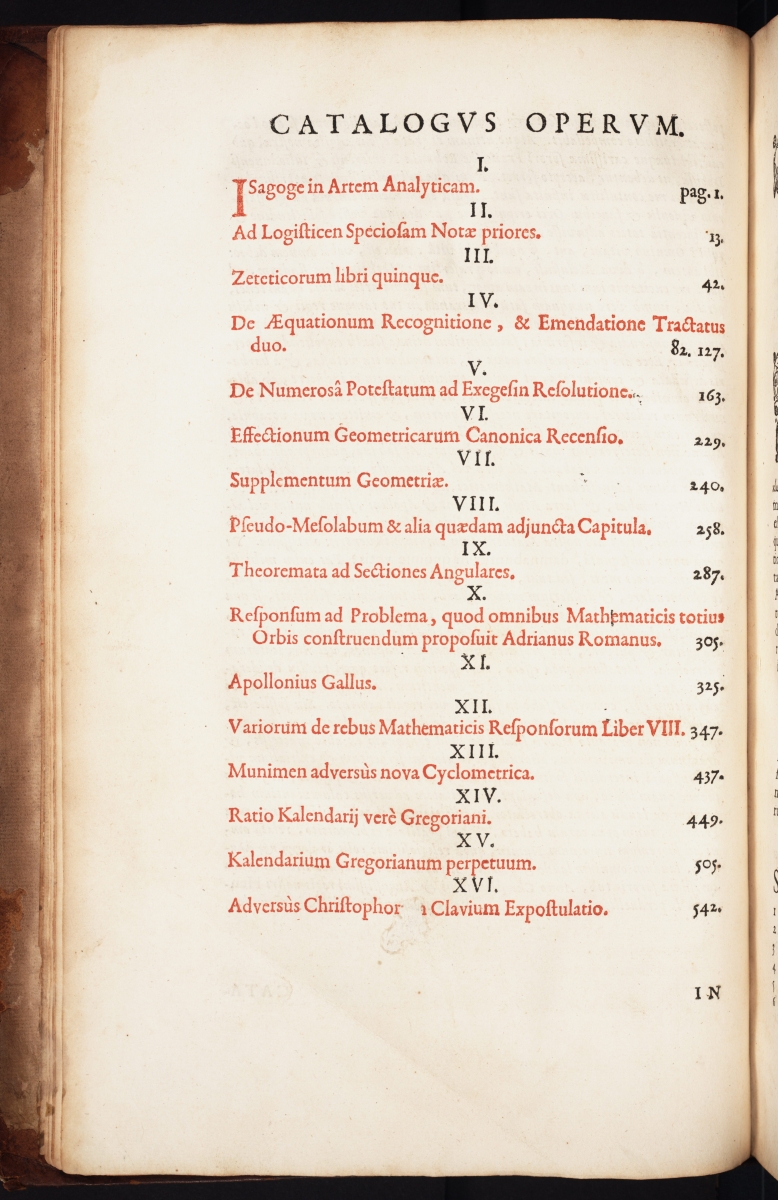
Viète is given credit for coining the term “coefficient” (Schwartzman, p. 48). It appears in the image below in the second sentence of paragraph 9.
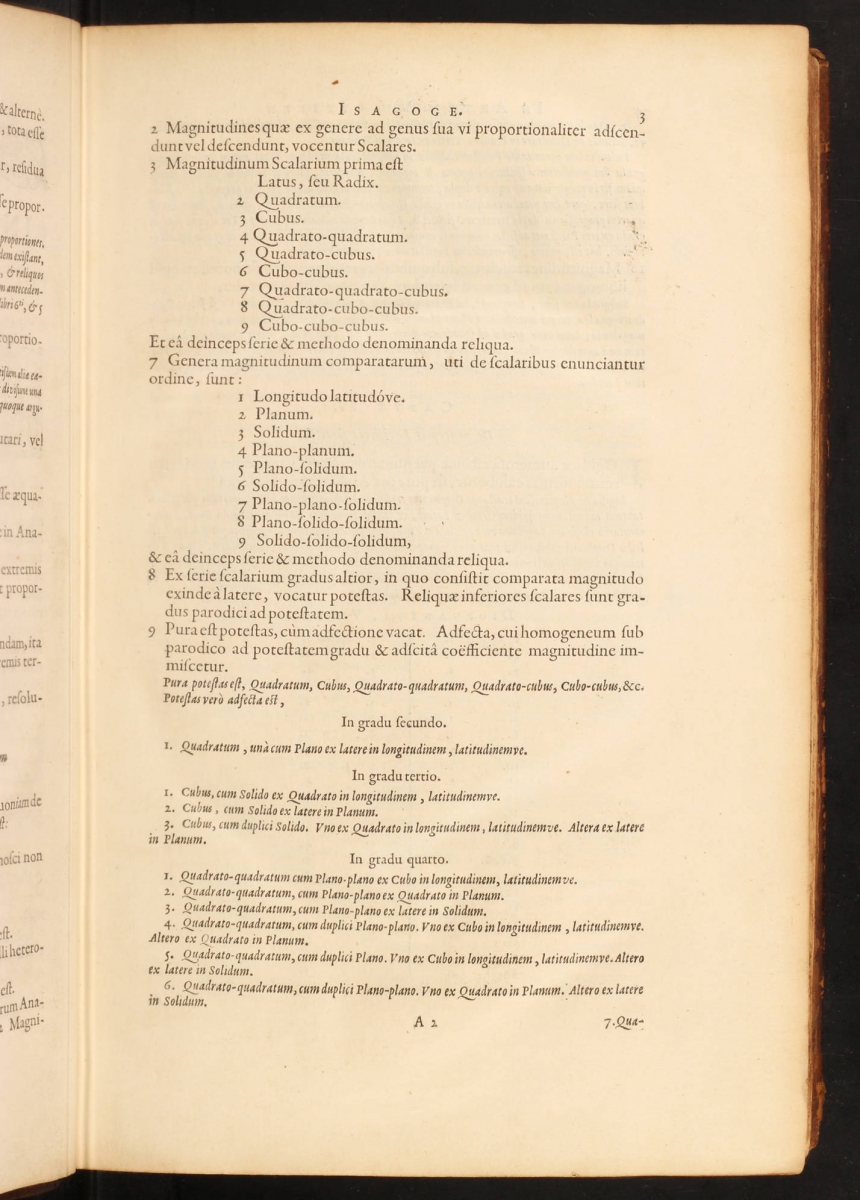
The next Opera Mathematica image shows page 5 from Isagoge in Artem Analyticam (Introduction to the Analytical Art. An English translation of Isagoge can be found in an appendix to Jacob Klein’s book Greek Mathematical Thought and the Origin of Algebra.) The page starts with Lesson 1 (To add a magnitude to a magnitude), followed by Lesson 2 (To subtract a magnitude from a magnitude), and then the beginning of Lesson 3 (To lead\multiply a magnitude to a magnitude). Notice that near the end of each of the first two lessons, it is written that analysts are in the habit of using the symbols + and – for addition and subtraction, respectively.

Below is a picture of the page where Viète introduced the use of letters to represent quantities. He used vowels for unknowns or “sought after” values and consonants for known values.
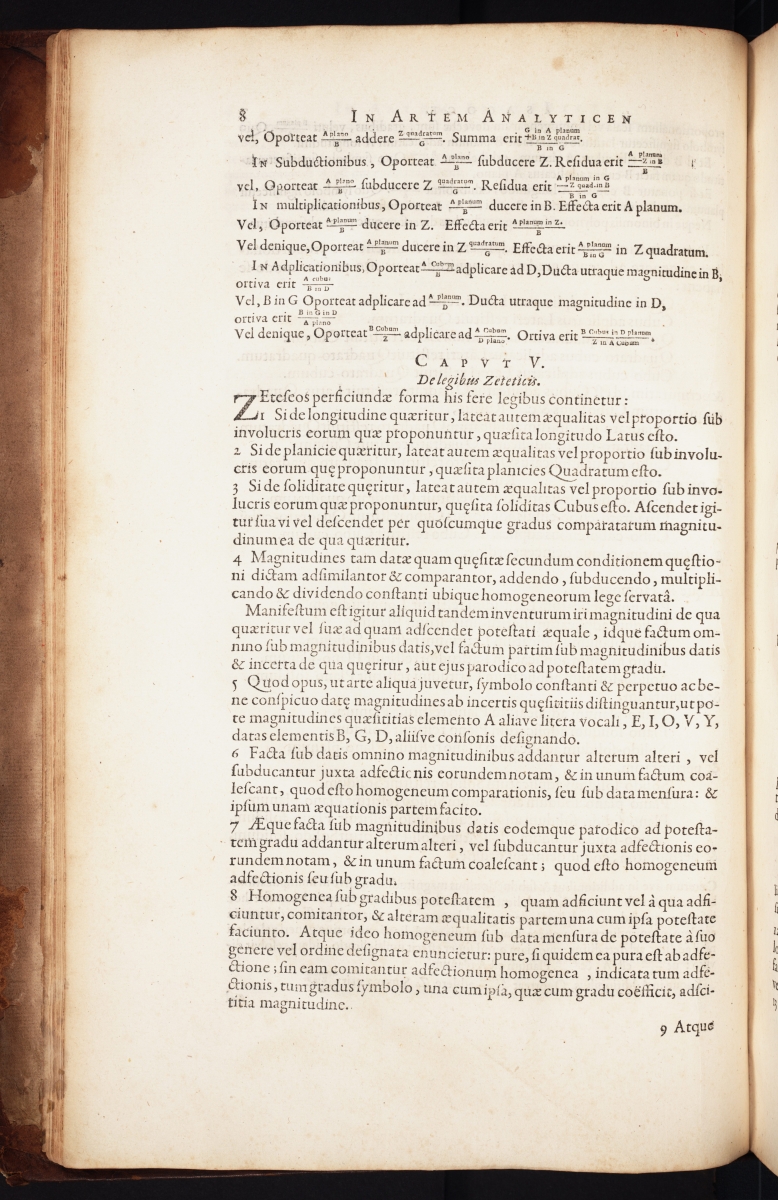
Also notice in the above picture, near the top, that a fraction bar is used as notation for division.
Although Viète distinguished between magnitude and number, we see in the image below, paragraph 25, that Viète discussed “formulas of equations in which ‘cubes’ are equated to ‘solids,’ ‘squared-squares’ to ‘plane-planes’” (English translation from Klein, p. 352).
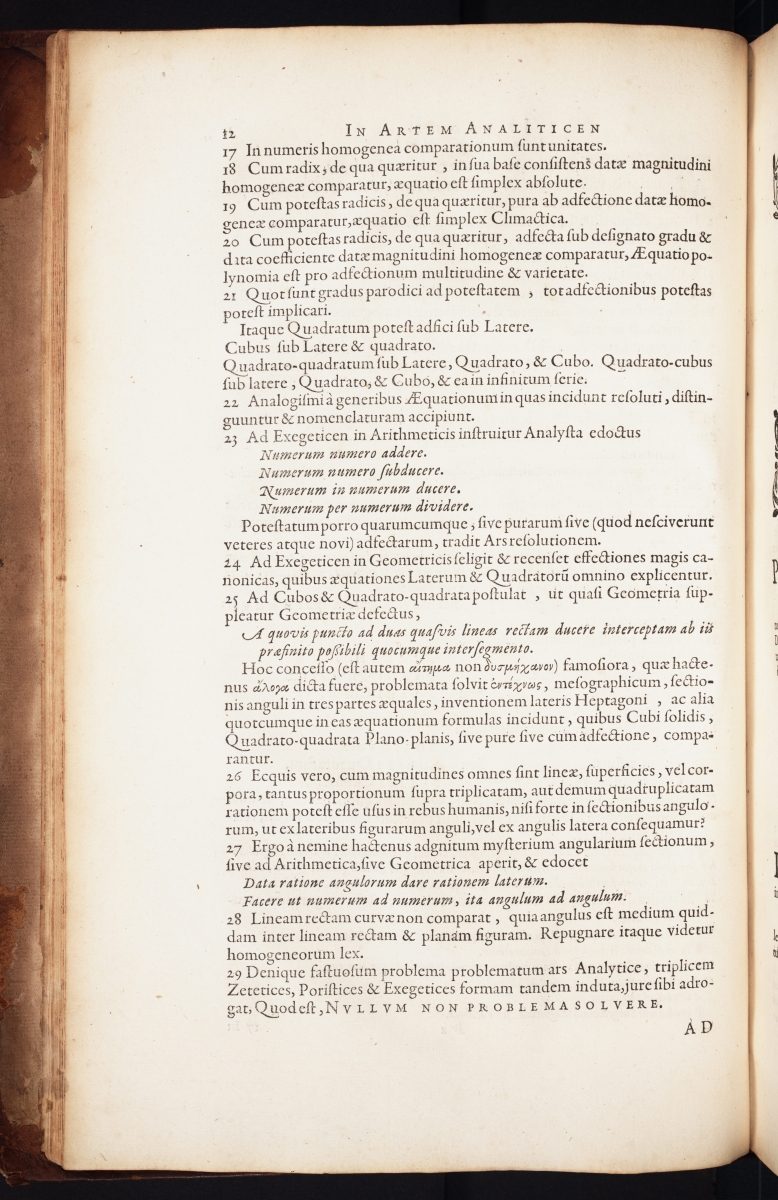
The above image is the last page of Viète’s Isagoge in Opera Mathematica. It concludes with an interesting quote about the goal of the analytical art: “NULLUM NON PROBLEMA SOLVERE,” or “TO LEAVE NO PROBLEM UNSOLVED” (English translation from Klein, p. 353).
The next two Opera Mathematica images are from Viète’s work Zeteticorum libri quinque, which consists of a collection of problems from Diophantus with solutions using Viète’s methods. These two pages contain the problem to find three right triangles with equal area. Notice the notation of an overbar used as a grouping symbol, instead of parentheses as used today, while multiplication is represented by “in.” Using modern notation and the Pythagorean Theorem, the first triangle on p. 71 (the second image below) gives \( (A^2 – B^2)^2 + (2AB)^2 = (A^2+B^2)^2 \). According to the Dictionary of Scientific Biography, “This innovation [of using A quadratus, A cubus, … to represent \( x^2, x^3, … \)], considered one of the most significant advances in the history of mathematics, prepared the way for the development of algebra,” and the shortening of quadratus to q occurred in the 1646 Opera but not in the original Zeteticorum (Busard, pp. 19 & 21).


A complete digital scan of Viète’s Opera Mathematica is available in the Linda Hall Library Digital Collections. The call number is QA33.V5.
Images in this article are courtesy of the Linda Hall Library of Science, Engineering & Technology and used with permission. The Linda Hall Library makes available all existing digital images from its collection that are in the public domain to be used for any purpose under the terms of a Creative Commons License CC by 4.0. The Library’s preferred credit line for all use is: “Courtesy of The Linda Hall Library of Science, Engineering & Technology.”
References
Busard, H.L.L. “Viète, François.” In Dictionary of Scientific Biography, edited by C. C. Gillespie, xiv:18–25. New York: Scribner, 1972.
Klein, Jacob. Greek Mathematical Thought and the Origin of Algebra. Dover Publications, 1968.
Schwartzman, Steven. The Words of Mathematics: An Etymological Dictionary of Mathematical Terms Used in English. Mathematical Association of America, 1994.
Cynthia J. Huffman (Pittsburg State University), "Mathematical Treasure: François Viète’s Opera Mathematica," Convergence (June 2018)




